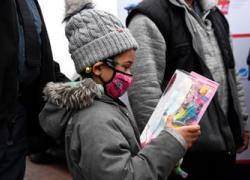Our Marketing Director is better Than Yours at LKPFM Corp
(Peter M Fiorillo) - Choosing The Right Marketing Agency,
- Choosing The Right Marketing Agency,
Many opportunities are Present in Reaching Customers, Clients, and Friends in Business as every written line is often read by opposition, Someone, groups that want more than what is being offered. System after system is at play in every message every idea, every thought. Crafting the Branding Message can often feel like Shooting an Arrow to hit the bullseye with a point to the communication. Packing data into the messages takes art we avoid as we just want your message to be read, creativity with LKPFM is to streamline your message free of viruses free of noise bridged to your point of view.
Taking the opportunity to handle opposition in the delivery of a message takes, Physical, mental and Technology only with the most important belief in what you're doing has tangible results on acceptance of message and clients knowing results are never Guaranteed. Our Syndication partners do Guarantee Reach which is massive in marketing. Having the ability to get the message out and read by the opposition says consumers have the right to eat it or not. So in modern firewalls of message clients ask what are the physical boundaries of Acceptance of Message. Beer is a boundary to the mass population, Frequency and FCC is a boundary to the population, Web Protocol framerates are boundary to the population, and given these are purchasable elements it Limits new brands acceptance to the market and Populations they can reach.
So how do we do it technologically and organically, First off were from the people and have drank a lot of beer, We Played advanced technology games and went to the source of crafting, We Listen and believed our clients to get to the root of what is being conveyed so as not to self consume our business in a time of speed and uncertainty. Constance Burke as a marketing and communications director is smart, tough kind, sensitive, loving, and often a microphone for the clients with accuracy and pointedness. Directional control for you is what syndication is all about as our client so we can have the organics of life direct, create, and sustain a message in a tide of private webs and virtual infrastructure while delivering your Brand message right to the doorstep of Millions of Americans every day you hire us. Constance Burke is a woman, a Canadian friend, and I Peter m Fiorillo think she's a great hire to help your company navigate the waters of Branding and marketing.
Go to lkpfm.com to request proposal.



 - The United States leads the world in artificial intelligence (AI), but this edge is at risk without a solution to the energy crisis caused by data centers that power AI, onshore manufacturing, and rapid electrification
- The United States leads the world in artificial intelligence (AI), but this edge is at risk without a solution to the energy crisis caused by data centers that power AI, onshore manufacturing, and rapid electrification 
 - Over the years, service dogs have become an increasingly familiar sight on trains, planes and buses; in restaurants, nail salons and shopping malls, and even at the beach, diligently escorting and protecting their human charges through blindness, hearing loss, ambulatory limitations and even mental-health challenges—there are now half a million service dogs at work in this country. I’ve come to marvel at these fantastic beasts, the organizations and volunteers who train them and the Americans with Disabilities Act that provides a protective infrastructure. These four-legged friends are heroes. Heroes, one and all.
- Over the years, service dogs have become an increasingly familiar sight on trains, planes and buses; in restaurants, nail salons and shopping malls, and even at the beach, diligently escorting and protecting their human charges through blindness, hearing loss, ambulatory limitations and even mental-health challenges—there are now half a million service dogs at work in this country. I’ve come to marvel at these fantastic beasts, the organizations and volunteers who train them and the Americans with Disabilities Act that provides a protective infrastructure. These four-legged friends are heroes. Heroes, one and all. Over time, Baby mellowed and began to display affection for me. Perhaps that’s because she realized I was the sole provider of her food and walks, but I like to think it was more than that. We became inseparable, velcroed together. On the rare occasion that I left our house, Baby welcomed me home as if I was returning from the war. She started to sleep on the pillow next to mine, and the moment my eyes opened, I was the recipient of a thorough tongue bath.
Over time, Baby mellowed and began to display affection for me. Perhaps that’s because she realized I was the sole provider of her food and walks, but I like to think it was more than that. We became inseparable, velcroed together. On the rare occasion that I left our house, Baby welcomed me home as if I was returning from the war. She started to sleep on the pillow next to mine, and the moment my eyes opened, I was the recipient of a thorough tongue bath. 
 - As we age, maintaining physical fitness and the ability to move our body easily becomes more important to our overall well-being. However, an often-overlooked condition known as sarcopenia can gradually lower individuals’ muscle mass and strength without obvious warning.
- As we age, maintaining physical fitness and the ability to move our body easily becomes more important to our overall well-being. However, an often-overlooked condition known as sarcopenia can gradually lower individuals’ muscle mass and strength without obvious warning. -
-  When it comes to installing a pool, spring and summer are the seasons that logically come to mind. But the best time to add a pool to your backyard is actually in the fall. There are definite advantages to installing later in the year that can make the process smoother, more cost-effective and, ultimately, more enjoyable.
When it comes to installing a pool, spring and summer are the seasons that logically come to mind. But the best time to add a pool to your backyard is actually in the fall. There are definite advantages to installing later in the year that can make the process smoother, more cost-effective and, ultimately, more enjoyable.
 - Si eres uno de los
- Si eres uno de los 
